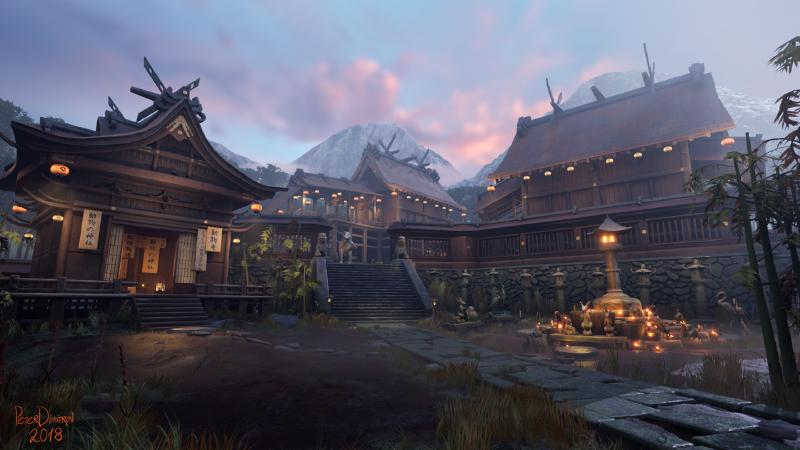Final Post
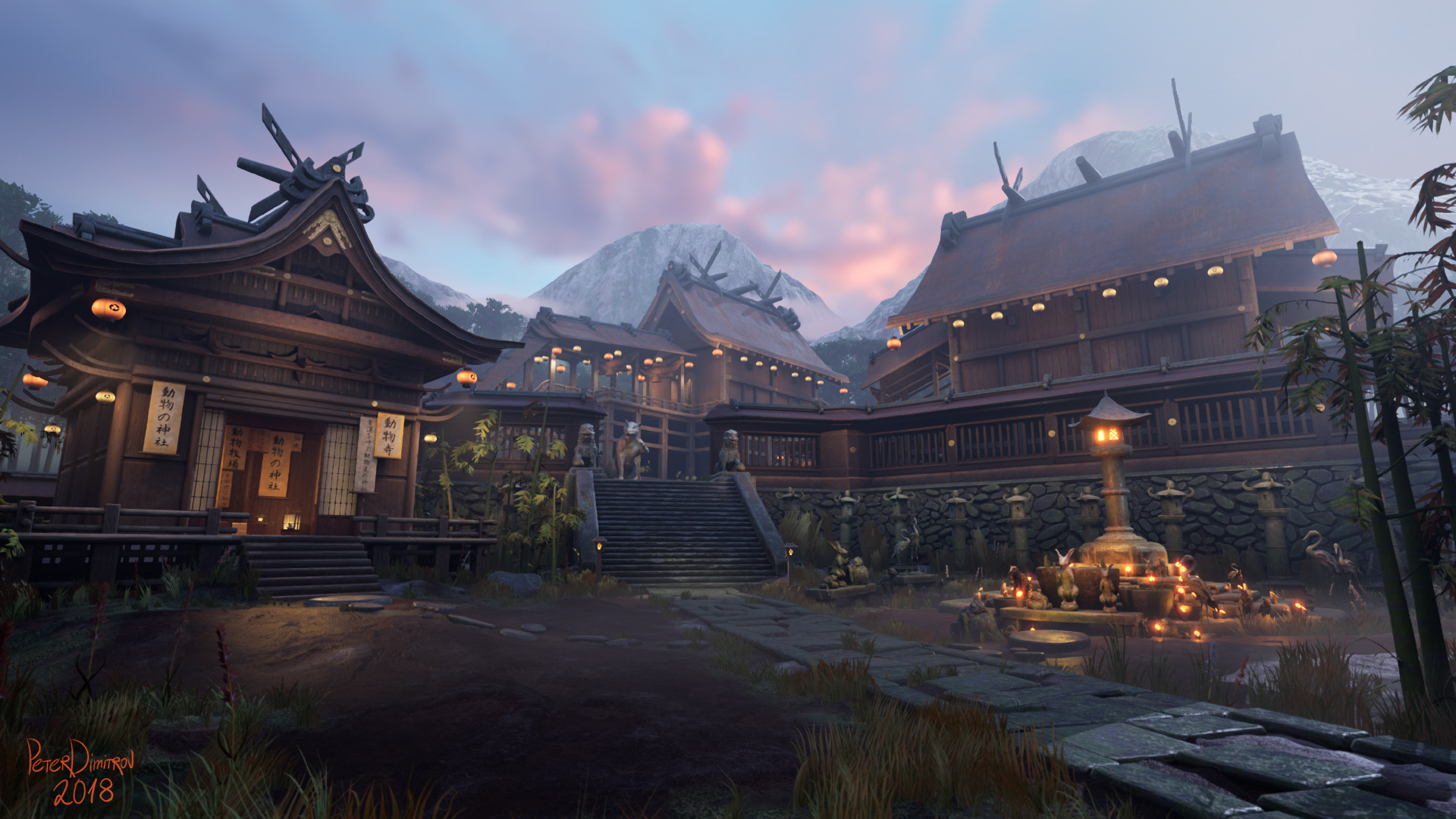
Here we are. The end. I can’t believe it. This is the first project of such a big scale that I’ve done in 3D, and it was quite the ride! As I promised, I worked a lot on a video, in order to show you the idea of the whole place.
The Animal Shrine. As some of the Japanese texts I have on the walls of my calligraphers workshop suggest, this shrine is a place where you can leave gifts and pray to different animals. At first, it sounds like it is a thing for fortune, and good health, but read deeper and you shall come across sentences like “Those who bring gifts shall have powers…”, “Point at your enemies and the animals shall follow…” and “The commander of the animals”.
But before I say anything more, here is the video. Enjoy:
Video flythrough
(YouTube video embedded above. It’s the main flythrough video showcase of the scene.)
In Japanese culture, as well as in lots of others, the animals I have depicted have a very common appearances. In Japan rabbits are thought to bring fertility, cranes were thought to be immortal and as such were considered secret. Frogs, some say, bring luck. All of that is referenced on the walls of the calligraphers, but I wanted to take it further. See if I could come up with something more mysterious and weird. And then actually have a go at executing it and telling it as a story through a video.
It was quite the challenge, I will tell you, and I redid that video about 4 times. Unreal’s Sequencer gave me lots of trouble too. It was good though, that along the way of making my props, I was exposing every single parameter possible. That gave me control over the colors of the lights, and the glowing eyes.
Some more screenshots:
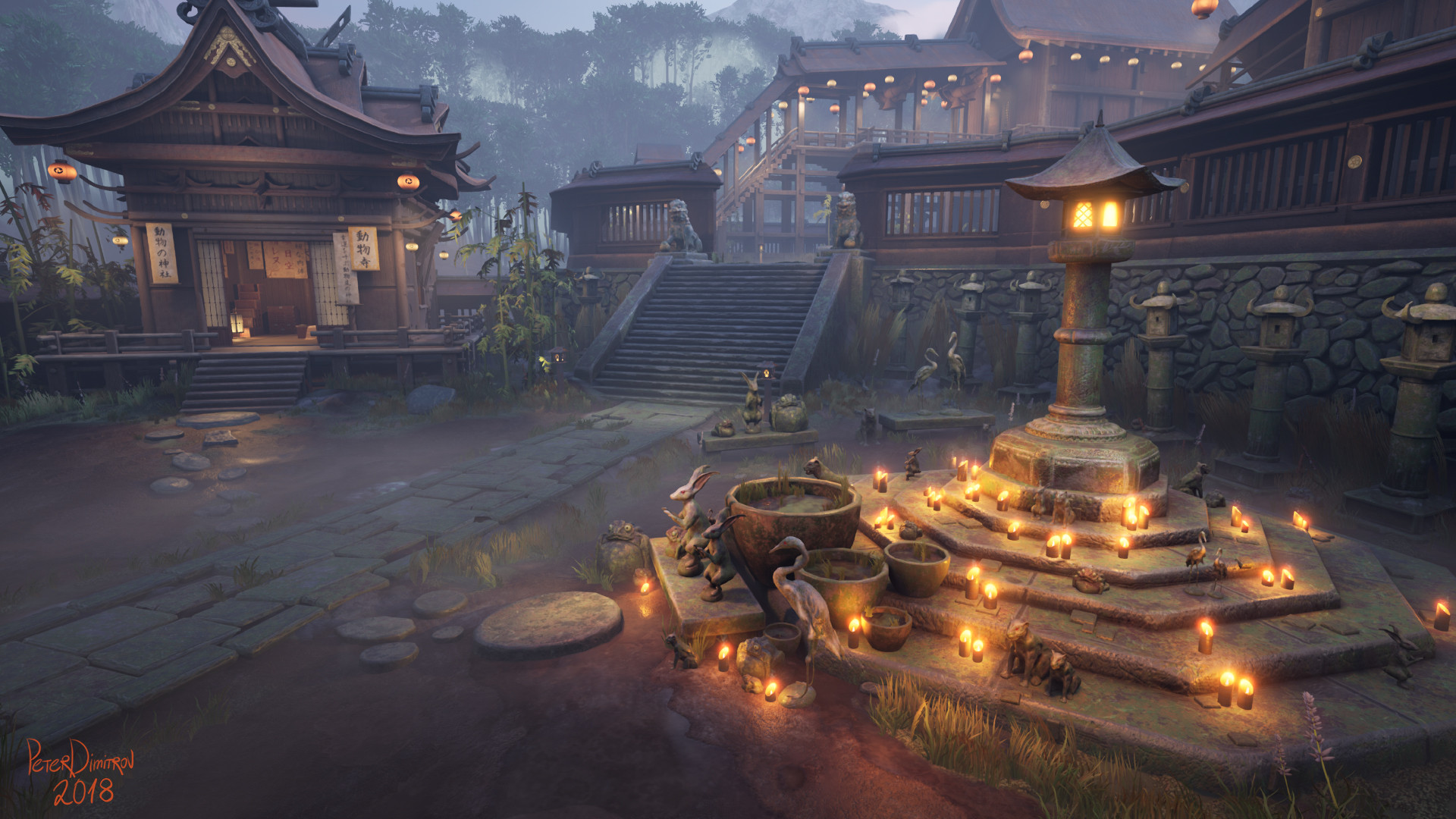
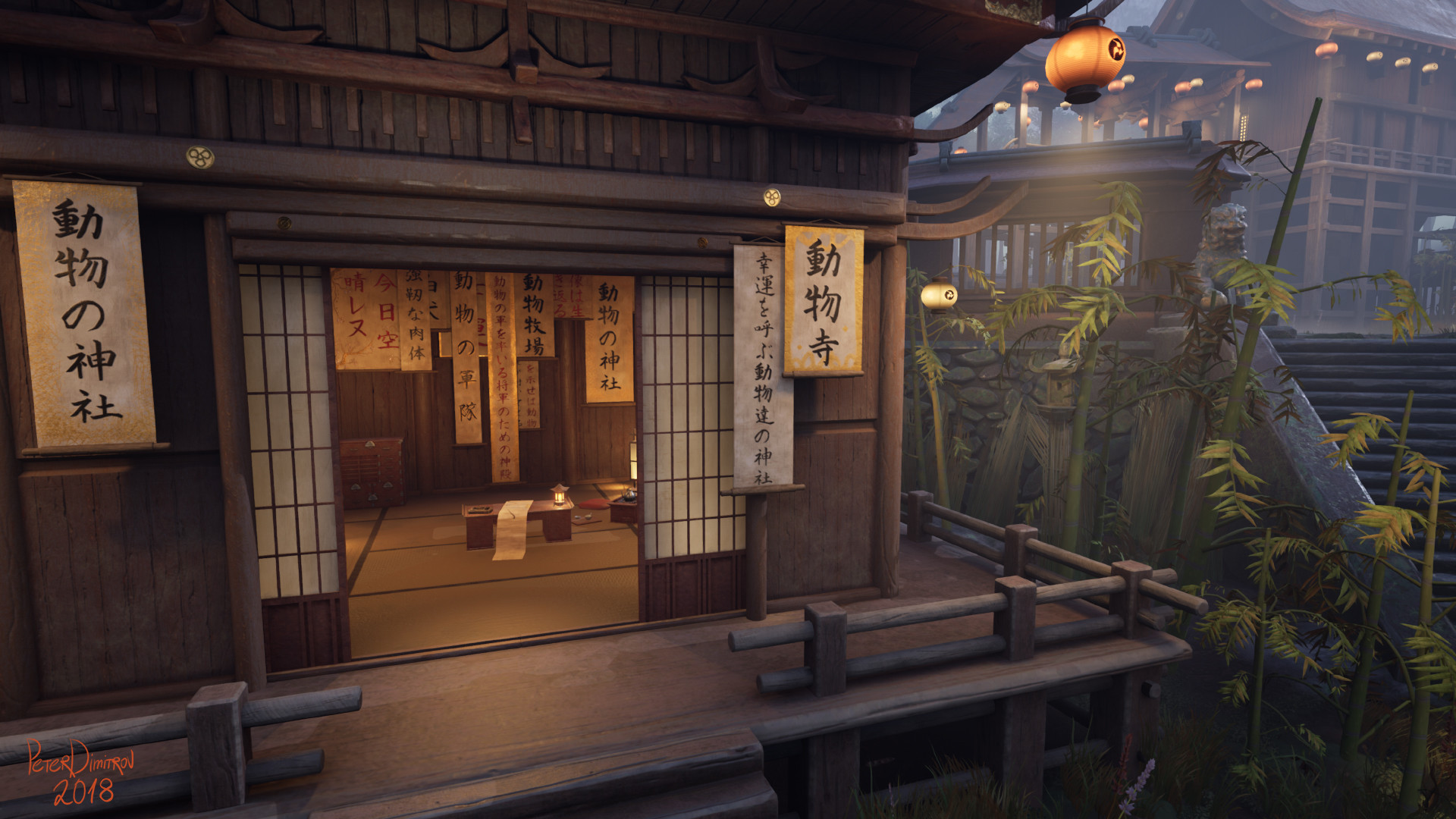
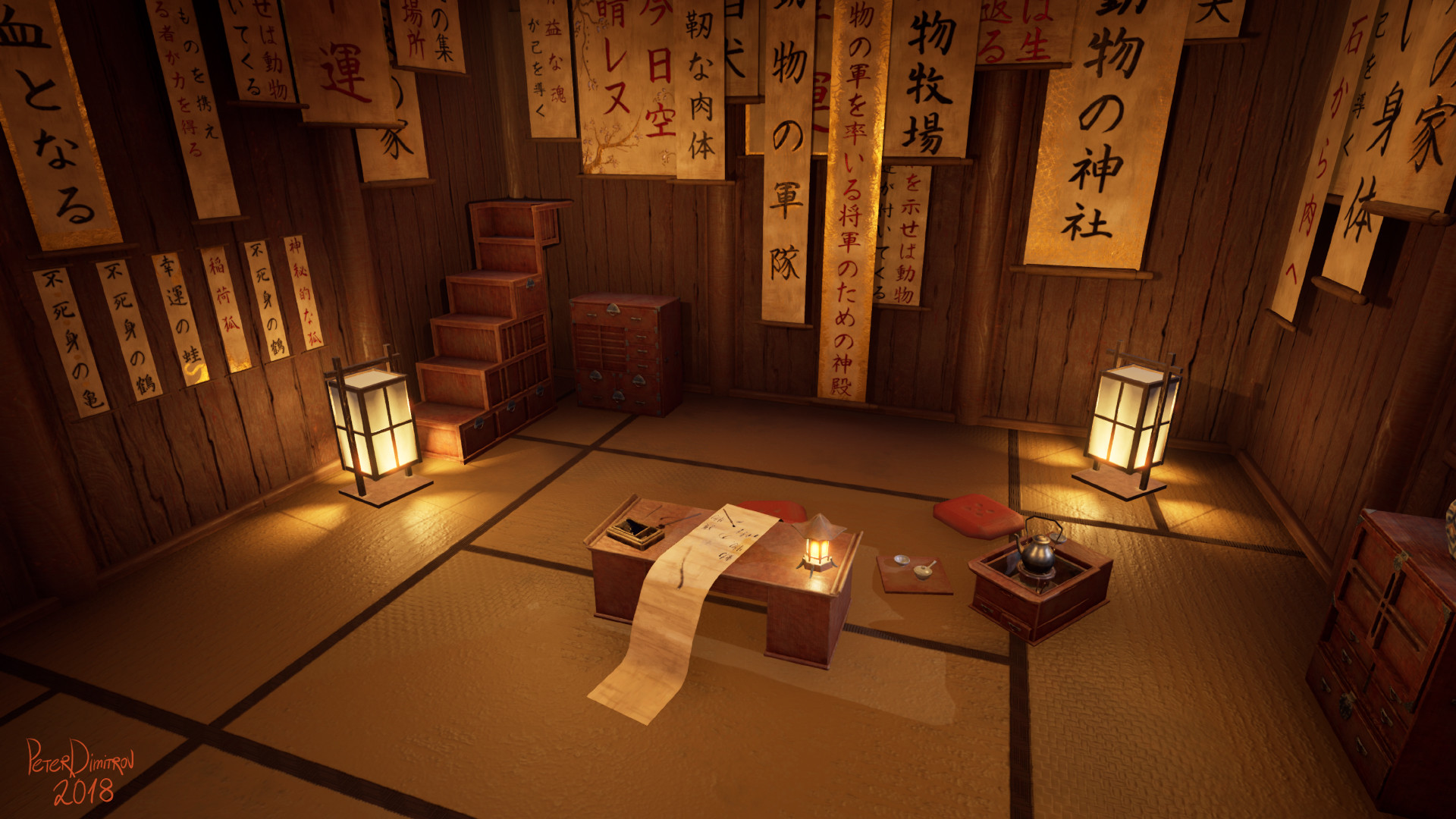
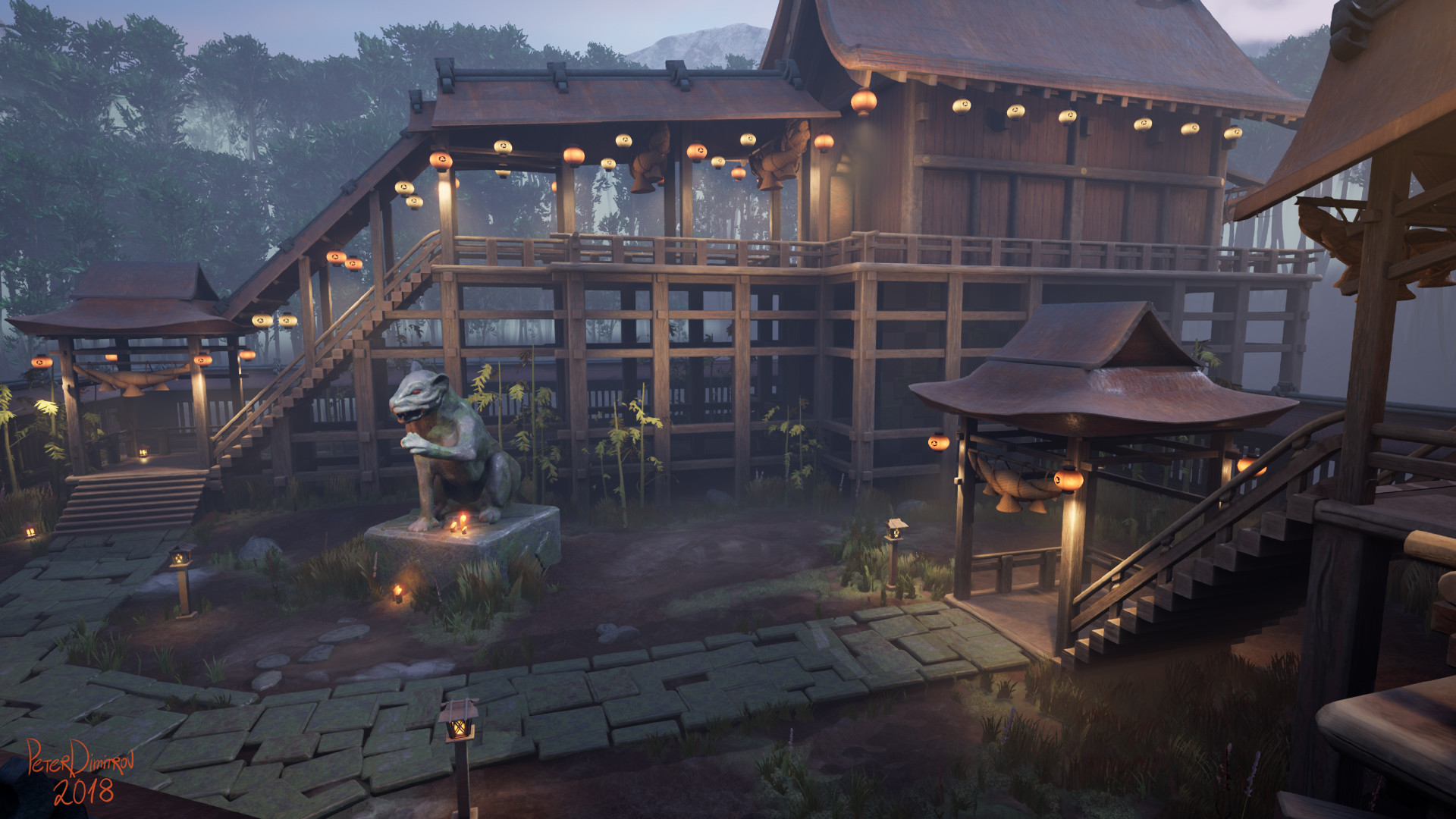
Process timelapse video
I have a second video for you. A sort of a development time-lapse:
(YouTube video embedded above. Shows a timelapse of the building up of the entire scene, from the placeholders beginning to the end.)
I did not take 431 screenshots, in order to have them unrecorded and not seen… This is not all of them, of course, but I made sure to take lots of specific angles through the making, and them combine them in a video. Hope you find it interesting.
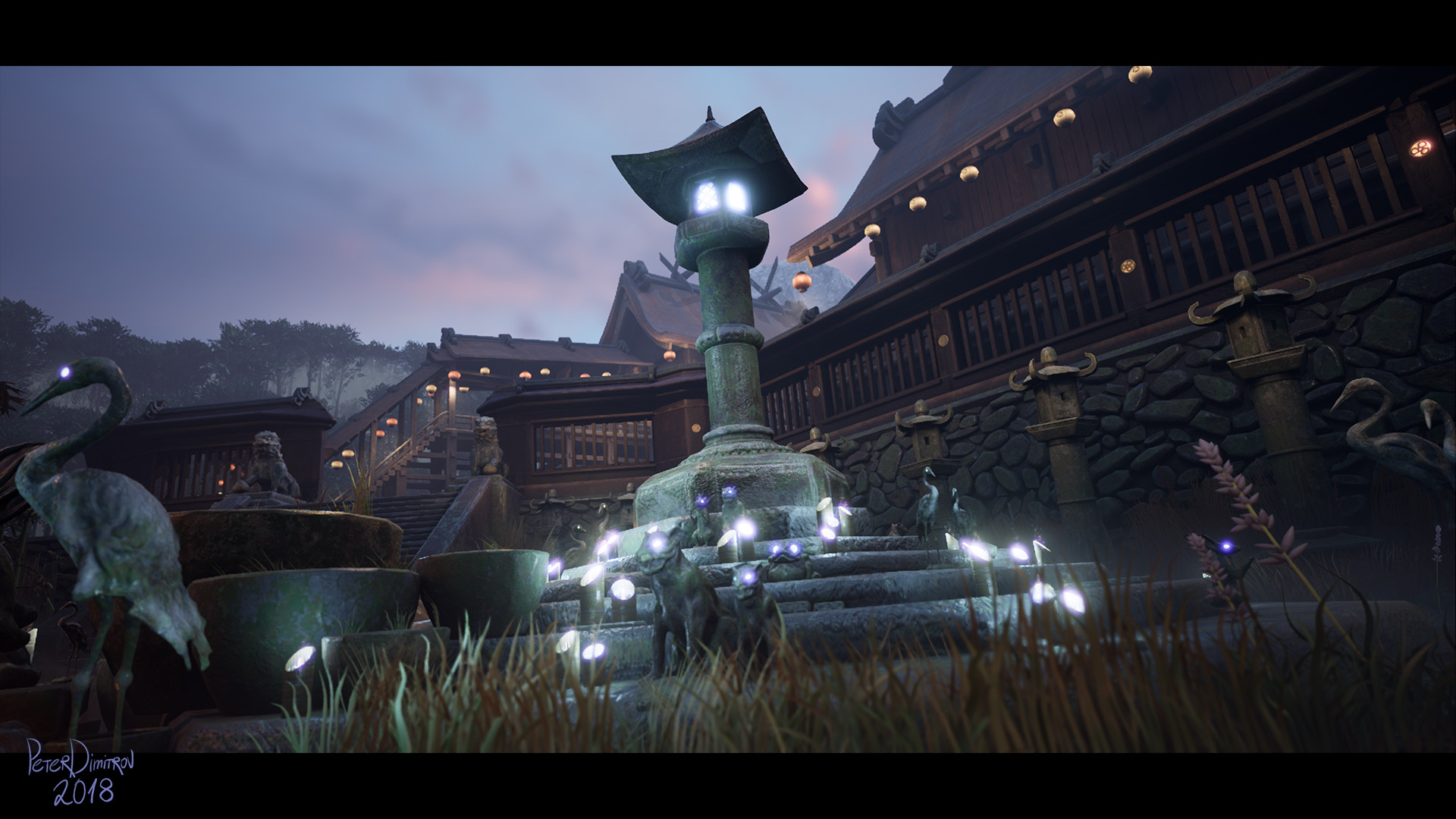
(I’m quite happy with this shot above, but I am leaving it down here, in the hopes that you first see it in the Video, and won’t get the whole surprise element spoiled.)
But now lets go to some technical talk. I recorded the scene in real time. The FPS is around 40-50 constant, but would occasionally drop down to 25-30 when looking through the cameras that overlook absolutely the whole place. I think you can feel a few frames drop on the first video.
At some point I was kind of convinced that I will not be able to record anything in real time, given that I am pushing my models and textures to appeal visually at their best. LODs are something I would love to do, but maybe not in a short challenge like this. I’ve tried to be very reasonable with my choice of texture sizes and my stacking of multiple objects on one texture sets. My machine is not bad, but it is by no means top-end either. I have a strong video card (gtx 1070), but pretty outdated CPU and only 8 gb of RAM. As such I am actually pretty happy with how the scene is running.
Materials and Callout Sheet
Let’s see my materials and call-out sheet for my models:
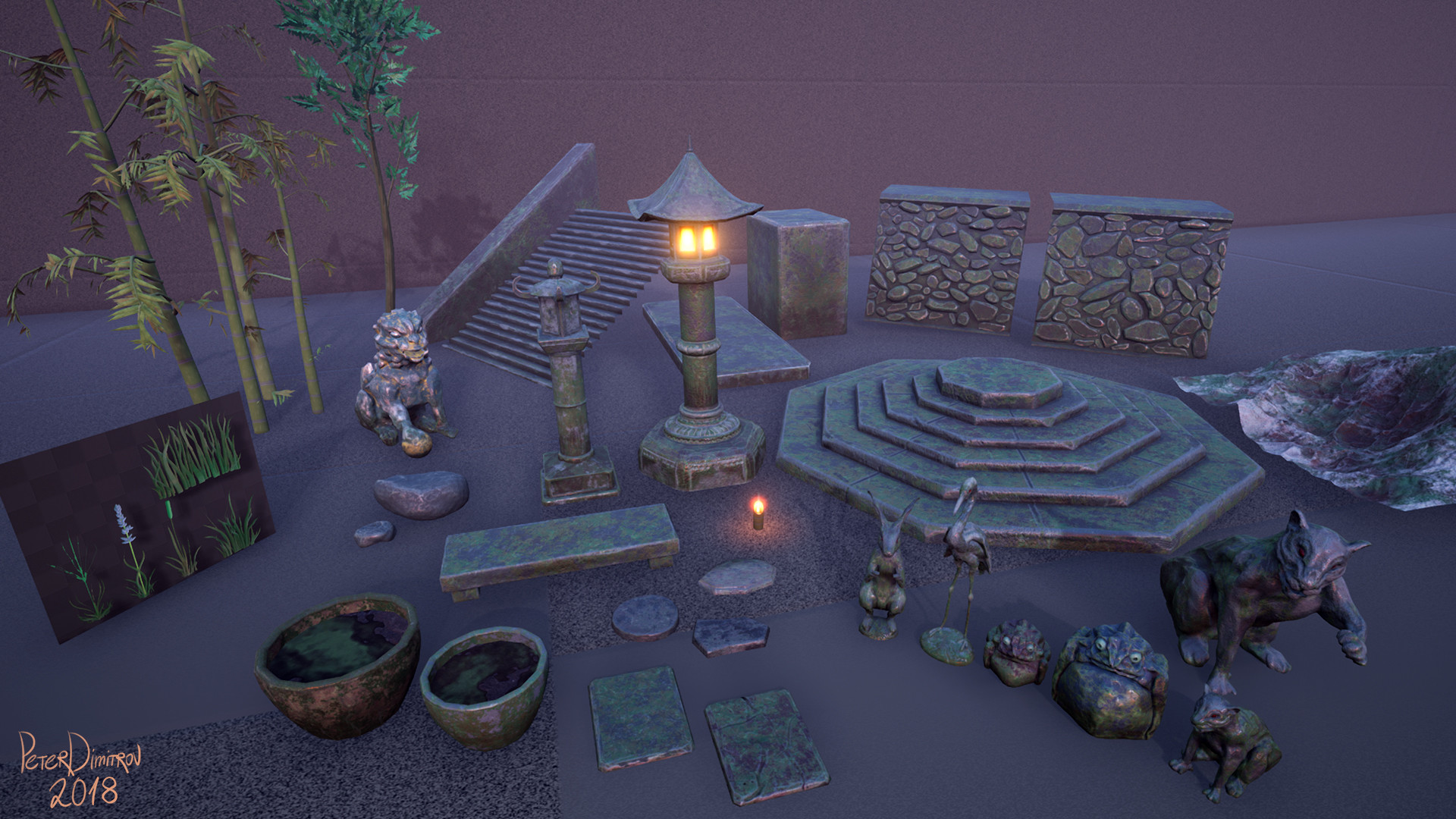
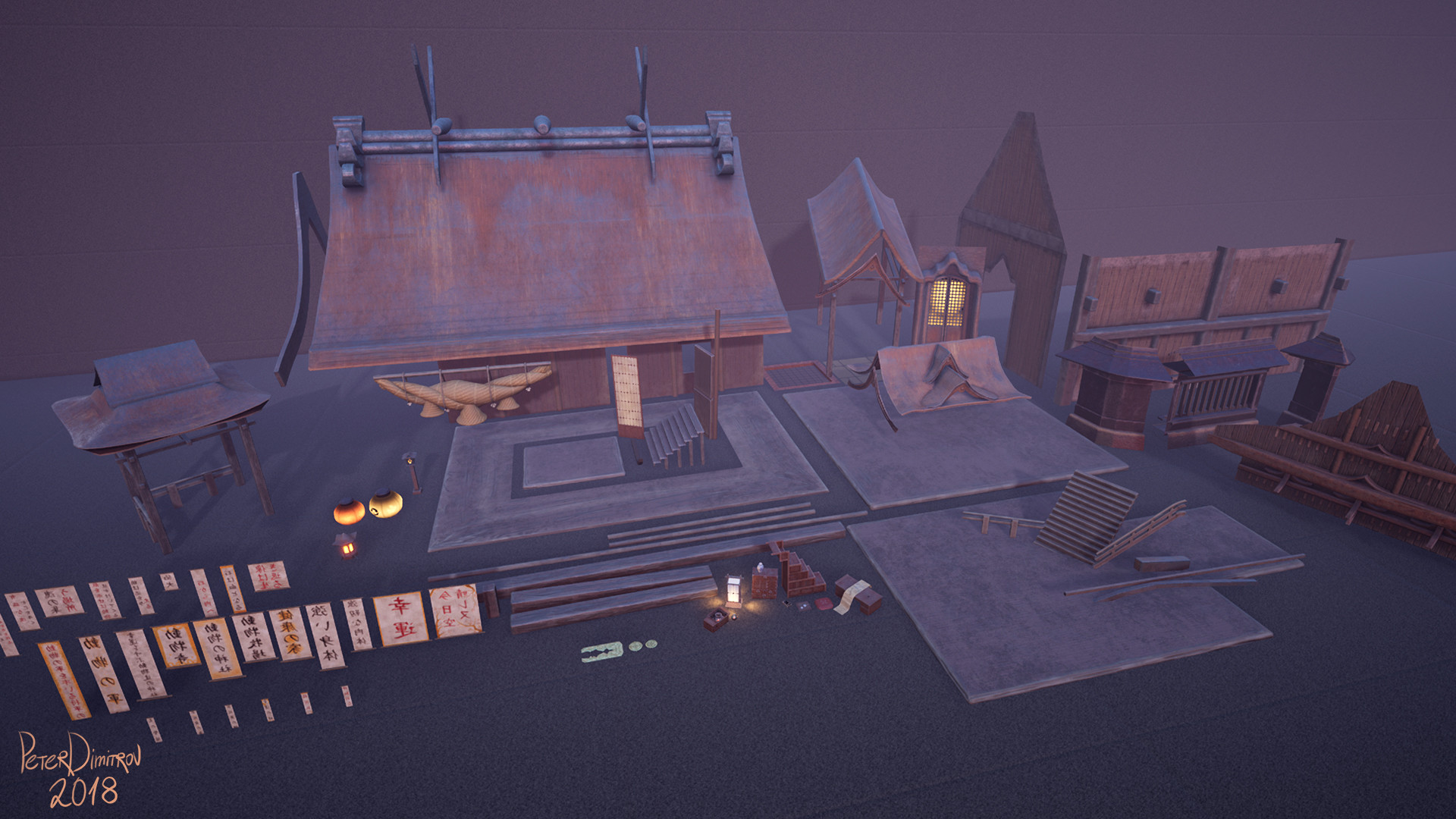
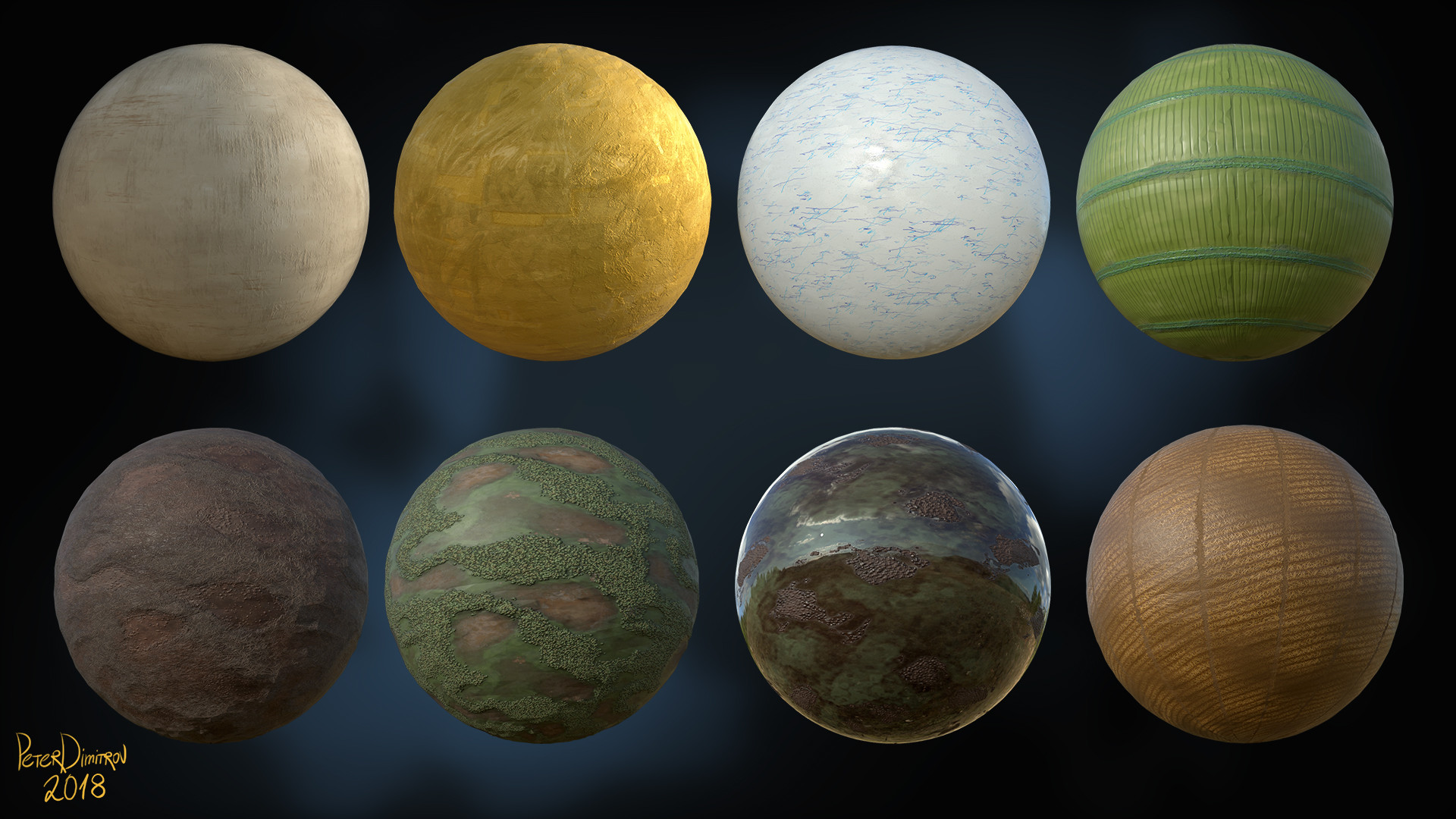
First row: paper, gold, porcelain, bamboo. Second row is my landscape blending materials plus a weird looking hay I used for the “hanging rope” detail piece you can see in the second picture.
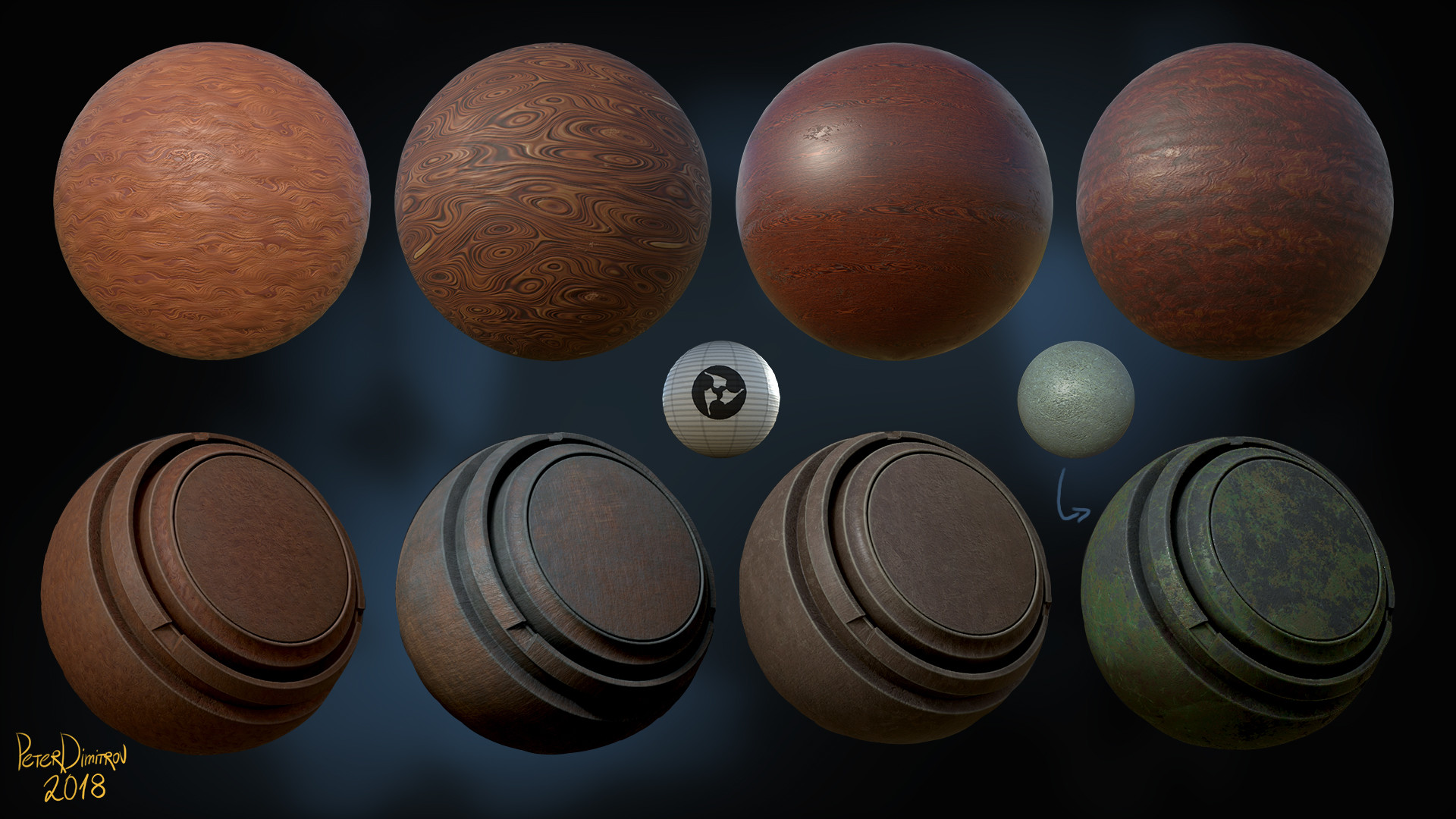
First row here is some basic wood materials I did in Substance. I then combined them in different ways, using Smart Masks in Painter. Last material is the stone I use in the scene. I made a simple one with exposed parameters for cracks and for hue. I then overlaid green version on top in order to make some cheap moss effect.
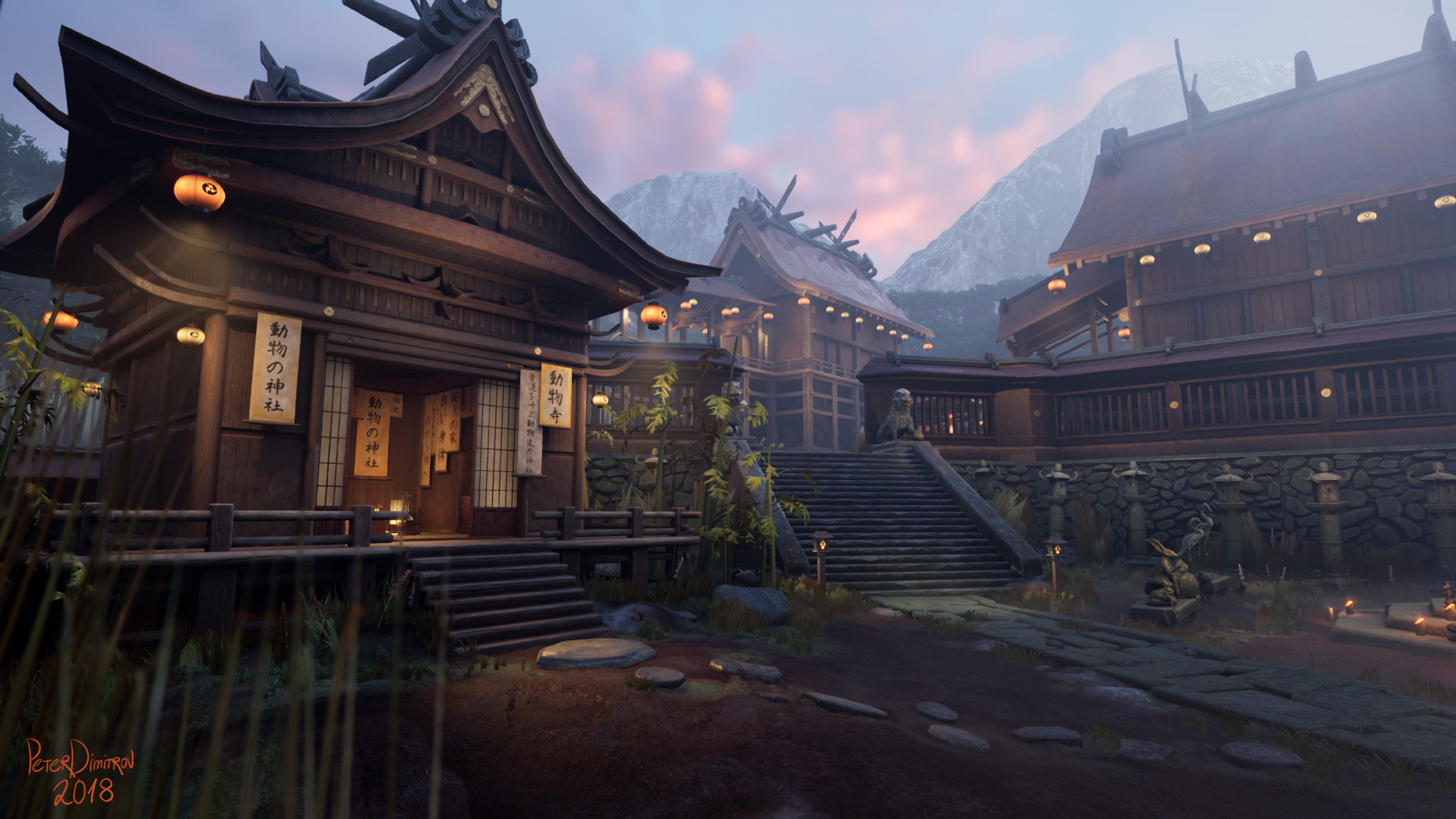
This project was lots of fun to do guys. I haven’t been to bed all night. I mean, its morning here in the UK right now, but when I woke up around 20 hours ago, to begin work on this, I knew it was going to be my final day on it. It made me feel kind of weird, melancholic. It’s stupid, I know, but lots of you are so amazingly good at what you do, my only chance to catch up was to work crazy hours. And in those crazy hours, I got so used to this project, I feel like I’m gonna feel empty for a quite a while, given that I will not wake up to have a stroll in it first thing.
I want to thank all of you out there for the kind comments and words I’ve gotten along the way here. Also, great thanks to all of my relatives, and friends, who put up with me, talking about this project, every. single. day… Got quite a lot of support over at my university too, so thank you guys over there too.
I have to mention my friend Rika Kanaya again. She is the one behind the translations of my weird ideas from English to Japanese. She guided me through on how to put it in texts. Thank you Rika!
I hope you enjoyed my project, and I hope that the video and story gave you at least a bit of a kick-out. I think I will have a long break now. Maybe spend a week or two, just in the realms of the 2D, with some casual painting. :P
Thanks for reading. As always, have a good one. May we meet again in another project, just as fun as this one (but maybe, a titbit less stressful).
Recollections and memories. Update from 2023
As I am here porting this old blog log into my new, personal blog website, I wanted to spend a few lines and talk about things I remember and recollect from this project. From the time I wrote the above at 4-5 am, in that sunless, British morning in my student accommodation flat over in Preston where I studied Game Design.
Above I talk about melancholy. I very much to this day remember the feeling and could go on to describe it in detail even now, 5 years later. Indeed, the daily opening and navigation of the scene branded into my mind strongly the space. For the following months, even a year and a bit after I finished this scene I remember having occasional moments of closing my eyes and in front of me, in my mind’s eye, seeing the Japanese scene.
This was happening and was incredibly strong the few days after I finished the project so I occasionally had moments of pondering if this project will indeed be engrained into my DNA for the rest of my life and if I will be revisiting it in my nightly dreams all the time.
Since then I’ve done quite a few more scenes and I don’t think any of them have come as close as to this one as being entangled into my mind and my psyche. That is even through the fact that most of my scenes after this one, I’ve spent more hours on and I’ve learned and done much better job at detail, space, texture, color and composition.
There might be only one space so engrained into my mind, now that I think of it. That would perhaps be my section of the Sniper Elite 5 multiplayer map “Flooded Village” that I worked on over at Rebellion. If in the scene above I spent two and a bit months of opening it and navigating its space daily, then Flooded Village I have spend 3-4 times that. As such I got the same “Tetris effect” where on some days my mind wonders off and I go into a daydream. In that daydream I find myself into the space and zones of Flooded Village.
Tech talk though–things I got wrong above, in the initial post in 2018. I talk about pushing my visuals to the very max and as such my performance suffering when I am overlooking the entire Japanese scene. Well, yes, I did give it my max but back then my max was not that demanding on resources as detail in textures, and geometry, is relatively lacking. That is if you compare it to my current works. As such there was another missing piece of the puzzle. The piece dragging my performance down. That is draw calls. Even though the lanterns you see above lack animations at the end, I did leave them as Movable Blueprints, as such splitting each lantern into its own, individual draw call. The little tiles that make up the paths, I scaled on the x;y;z in all kinds of fractions, splitting each and one of them into individual draw call as well.
I’ve not run any profiling to see my draw calls in that scene (I didn’t know about it back in 2018). And I hardly have the time to go back into that project now and check, but I can guarantee you that indeed the draw calls are needlessly high.
As such whenever you work on your projects, pay attention to them. If you wish, you can read more about draw calls over here (if you somehow missed the blog in the first place).
You can find the gallery for “The Animal Shrine” with all of its screenshots and videos over here.
Even with its problems this project still has a special place in my heart. Over time, in the last few years, I also realized that this is one of my most popular projects (most likely due to me writing about its process over at 80 lv website. Also being featured in The Rookies and getting printed in 3D Magazine thanks to a rubric about The Rookies.)
Since its making I think I’ve grown a lot and learned tons more about art, 3D, composition and crafting good spaces. Yet I try to embrace this project, knowing how much it’s enjoyed by most of the lovely people that follow my art online.
As such thank you very much for reading through the blogs about the making of this.
Thank you for all of the nice words, to those of you who have reached out.
All the best,
Pete.
